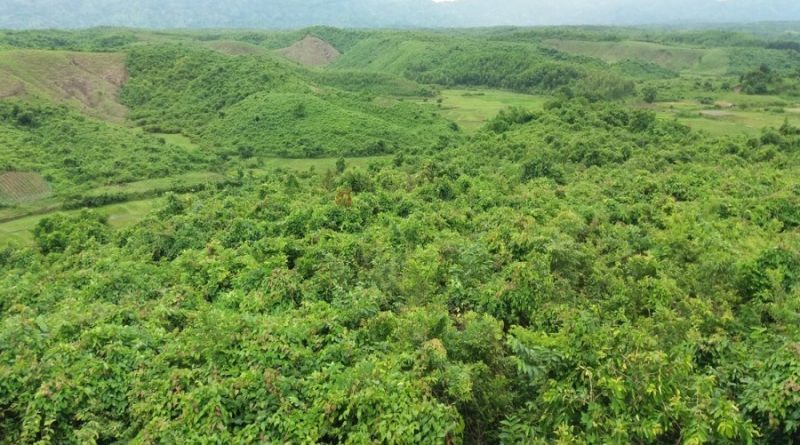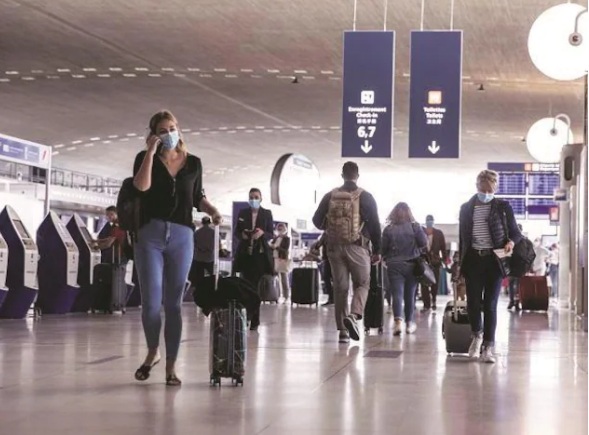Tourism: Mitigating the conflict between growth & environment.
The beauty and the prestigious past of Bangladesh have always attracted tourists, anthropologists, and archaeologists. From an economic perspective, undoubtedly, tourism is an important sector responsible for the growth of Bangladesh’s economy. According to the Bangladesh Bureau of Statistics (BBS), the sector contributes some 3.02 per cent to Bangladesh’s Gross Domestic Product (GDP). Each division of Bangladesh has its own natural resources and historical heritage. Bangladesh has a combination of hill tracks, sea beaches, and forestry. Khulna, Barisal, Sylhet, Tangail, and Chittagong are the districts with prominent tourist spots. The beautiful hill tracts of Chittagong, having many natural springs have recently become one of the most visited tourist destinations by adventurous youth.
However, from an environmental perspective, tourism has some negative correlation with environmental pollution. Therefore, the focal point here is, how tourism being an asset for the economy can negatively impact the environment and how by implementing prudent policies the government can make tourism an environment-friendly industry.
Firstly, 16.4 lakh tourists visited Bangladesh in 2018-2019 as per BBS figures. A majority of tourists prefer traveling by air, which causes more pollution than most other vehicles. Moreover, tourists spend considerable amounts on food consumption, accommodation, and transportation. These sectors are also capable of substantially damaging the environment if they are not constructed and operated in an environmentally friendly manner. Furthermore, to accommodate these tourists many luxurious hotels and resorts are created around tourist spots, destroying the ecosystem of those places. Their expenditures contribute to our Gross Domestic Product (GDP) and boost the economy but often impact the environment. For example, Abdus Salam-Director of the Department of Environment and Senior Chemist of Gazipur districts-affirmed that no resort in Gazipur has a clearance certificate which is necessary according to section 12 of the Bangladesh Conservation Act. Sal Forest of Gazipur is reserved forestry. For tourist operators who are generally private businesses, the priority is profit maximisation-even at the expense of causing destruction to the environment. So, tourism can be negatively related to environmental preservation.
According to the report of BBS, only about 20 per cent of tourists who come to Bangladesh are foreigners. If the target is to attract more foreigners, then the focus should be on preserving the environment rather than just using the environment as a selling point of the luxurious resorts that are destroying the environment. Among foreigners, hiking, camping, snorkeling, deep sea diving and fishing are popular which do not impact the environment negatively. Moreover, the government needs to increase social security so that foreigners do not need to stay in luxurious resorts. The government can incentivise the locals to host overseas tourists and help them have an authentic experience in the wild.
Secondly, tourists who visit countries with high air pollution might face many cardiovascular diseases. Usually, if tourists come from an air pollution-free environment to a polluted environment, then they have a higher possibility of facing cardiovascular diseases and respiratory events. The Journal for ‘Travel medicine’ mentioned the research that was done in Beijing, Shanghai, and Hong Kong as these cities have higher concentrations of polluted air. To conduct this research the emergency centres of the hospitals were visited, and this showed that short exposure to polluted air caused more cardiovascular diseases among tourists.. From the air pollution tracker application, we learned that all the tourist destinations of Bangladesh have ‘unhealthy’ conditions of air which can be quite fatal for travelers who get exposed to unhealthy air. Additionally, the air condition of Dhaka according to Table 1 is ‘hazardous’ so those who visit Dhaka just for a few days, face more unfavorable consequences as they don’t have any adaptive mechanisms in their body.
To solve this conundrum, we can opt for the carrot-and-stick method to encourage tourism without damaging the environment. Here carrot refers to incentives and stick refers to strict policies such as tourism taxation. We need to start with the bottom-up approach where changes can be made from the micro level. This is the ‘carrot approach’ where incentives can be provided to individuals to participate in protecting the environment. Such an initiative that goes by the name of ‘Food for Plastic” was taken by Bidyanondo Foundation and the news was featured in print media recently. With this programme, they encouraged the locals to collect plastic waste and in exchange provided them with food which helped them clean the plastic waste of Saint Martin island. These types of programmes can be taken by the government as well.
It is also important to apply tax on tourists. Countries like Malaysia and the Netherlands apply tourism tax. This tax can be collected from the hotels. Tourists will need to pay tourism tax in the form of municipal taxes in hotels they stay. Another way of collecting this tax is from the accommodation on the water vehicles. This method can be applied in the beaches and riverine spots where an accommodation system is established such as in the Sundarbans and in the launches of Barisal.
According to the report of BBS, 80 per cent of the tourists who visit Bangladesh are nonresident Bangladeshis. This indicates that we get only a few foreigners as tourists. If the government can implement the tourism tax and then use the tax revenue to better the environmental condition of the tourist attractions, then more foreigners will be attracted.
Lastly, it is important for the government to design policies in a manner that would ensure Sustainable Development Goals (SDG). For example, tourists can be encouraged to not use air transportation frequently and use public transportation. To promote the use of public transportation, Bangladesh Road Transport Corporation (BRTC) can rxpand their bus services with better facilities and reduced fares in tourist regions.
To conclude, the tourism industry is highly beneficial for the progress of Bangladesh. However, it is negatively affecting the environment of our country. Additionally, the way tourism is affecting the environment in Bangladesh, travelers are also facing severe health issues due to the polluted air of most tourist destinations. Therefore, proper policy measures are a must to make our tourism industry both economy-boosting and environment-friendly.
Tasnia Isbat is studying BSc in Economics at BRAC University. isbattasni@gmail.com and tasnia.isbat@g.bracu.ac.bd



